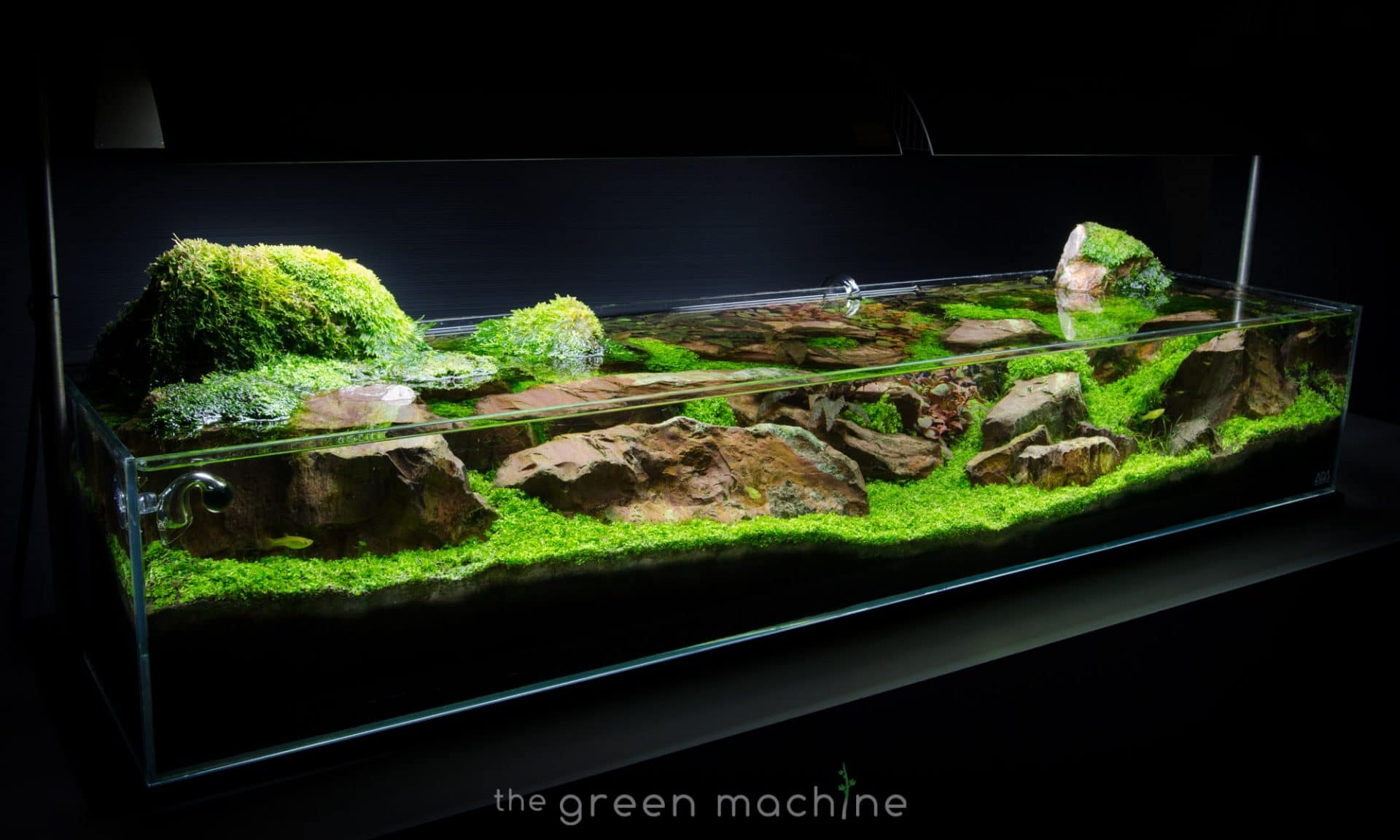
This is another of James Findley’s shallow display aquariums for The Green Machine. On this page you can find the list of all equipment used, as well as step by step photos from empty tank to grown in aquascape. You can also watch the step by step video.
Setup Specifications
AQUARIUM & CABINET
SUBSTRATE SYSTEM
- ADA Powersand Special M
- ADA Aquasoil Amazonia Powder 9ltr x 2 bags
- ADA Tourmaline BC
- ADA Clear Super
- ADA Bacter 100
HARDSCAPE MATERIALS
FILTRATION SYSTEM
HEATING
- Inline heater
LIGHTING
CO2 SYSTEM
FINAL PLANTS USED
Find the video transcript below the image gallery.
Step by Step Photos
Video Transcript
00:00
Welcome back to The Green Machine- the nature aquarium specialists.
This video documents professional aquascaper and founder of The Green Machine, James Findley, creating an aquascape step by step.
As you can see, the results of this aquascape are simply stunning. James used a 120 x 30 x 20cm aquarium because the shallow dimensions of the aquarium lend themselves so well to experimenting with emersed plant growth, and rock work that extends above the water’s level, adding a whole new dimension to aquascaping.
James enjoys working with shallow tanks because they are fun to create, easy to maintain and the unusual dimensions allow for a high degree of originality within the layout. You may have seen some of his other shallow layouts such as ‘Crimson Sky’ and ‘Tributary’ which you can find on our website at www.thegreenmachineonline.com where you can also buy everything you need to create one of these layouts yourself, and learn how to create aquascapes.
00:49
James began this layout seventeen months before the final shots were filmed. Now we’ll move back in time to show you each stage of the creation.
The first thing to enter the aquarium is some ADA Power Sand Special L. This is an organic nutrient rich substrate base layer with a large surface area. It encourages beneficial bacteria colonies which help with the filtration of the tank once it’s up and running. This product contains some ADA Bacter 100 and ADA Clear Super which promote the growth of beneficial bacteria. Underneath this you can see some other substrate additives that James has already added.
James uses a Sand Flattener to move the Power Sand into position. He moves it away from the front of the aquarium for aesthetic reasons- so that it won’t be visible next to the glass. It will be concealed underneath the neater-looking ADA Aqua Soil.
02:00
James adds some Tourmaline BC which contains bamboo charcoal which is an excellent filtration material because it absorbs pollutant substances. He sprinkles it across the whole surface of the substrate layer.
02:24
And here you can see a red-ish coloured powder which is ADA Bacter 100. Again, this is sprinkled across the whole of the substrate layer.
These substrate additives are not necessary but will help ensure the best possible conditions for your aquatic plants. James always prefers to give his aquariums the best treatment throughout in order to maximise their potential to be stunning planted tanks.
03:01
James now adds even more Clear Super, which is a black powder that helps the growth of microorganisms. This will keep the conditions in the substrate fresh- particularly in areas where the substrate is quite deep.
03:47
Again, a sand flattener is the perfect tool to move additives and substrate into position.
03:59
Now it is time to add the main plant substrate. On this occasion James has chosen ADA Aqua Soil Amazonia which is the most popular plant substrate in the world. It is a complete substrate which may be used on its own without all the additives and Power Sand underneath. However, James prefers to use the extras underneath in order to achieve the best results for growing aquatic plants.
Aqua Soil comes in 2 grain sizes- normal granules and powder type. Here James is using the powder type which he chose because it’s smaller grains make the rest of this aquascape look bigger- giving a better sense of scale.
You can see James banking the aqua soil up at the back of the aquarium to give greater height. This effectively increases the surface area of the base of the layout and angles it towards the viewer’s eyes. James often uses this technique in many of his aquascapes.
05:01
Now that the substrate layer is finished, James places the first stone. For this layout James has chosen to use ADA Sado Akadama Stone which has lovely red hues that beautifully complement green plant growth.
He uses a Sand Flattener to move the Aqua Soil in to position around the rocks as he places them.
As he places each piece he carefully monitors the look of the layout, making any adjustments to rock positions that he feels necessary. James uses his artistic instinct to guide his rock placement, as well as analysing the layout from all angles at each stage.
James usually has an idea of what plants he will be using at this stage, and visualizes the future plant growth around the hardscape materials to aid in his decision making.
06:06
In order to get the rocks into the desired positions, James adds some extra Aqua Soil Powder type in key locations to raise the height of the substrate and/or aid in bedding-in the stones. He uses a jug for this task as he can accurately position the extra aqua soil using this tool.
Aqua Soil is also poured in between the stones which makes them appear to have been in position for a long time.
The title ‘Continuity’ comes from the fact that this layout of a continuous line of stones with no obvious break in it’s structure- such as is featured in a traditional U-shaped layout. You can find descriptions and explanations for all the traditional layout shapes and styles on our website and in many of our videos.
We’ve sped up this section of the video to 8 x faster than realtime.
You can see how James places the rocks right across this layout from left to right.
07:00
A useful tool to any aquascaper is a 3 inch paintbrush… which may be used to move substrate around and into position.
7:03
Now that the hardscape is finished, James begins to add TGM Substrate Supports which he designed to aid in creating aquatic layouts. They are an integral part of all his aquascapes.
He inserts them into the gaps between the hardscape, particularly in areas where the substrate has been banked up. The result is that the substrate becomes a lot stronger. This prevents top layers from rolling downhill and destroying your layout.
They are inserted vertically into the substrate and as they have a very small surface area they do not compromise the planting.
Each support is cut to size for its specific location. Often you will need to test the support in a location, then if it doesn’t fit properly, remove it and make adjustments to it’s size by cutting it, then re-insert it in the same location.
08:00
You can buy TGM Substrate Supports from our website at www.thegreenmachineonline.com and we ship Woldwide.
09:19
Once James has inserted all the TGM Substrate Supports he adds some more Aqua Soil over the top of them to conceal them fully.
09:47
Now it is time to being planting.
This tank is fairly unusual because James chose to change the main plants from Echinodorus tenellus to Micranthemum ‘Monte Carlo’ some time after it had grown in. This was because James felt that the Monte Carlo fitted in better with the tank’s theme of ‘Continuity’ and effectively drew in the stones more into a cohesive continuous grouping.
This is not to say that the initial planting was unsightly, in fact it was very popular among visitors to The Green Machine’s gallery. However from a subjective point of view, James decided he would prefer Monte Carlo and re-planted to realise this vision.
10:24
Here you can see James using ADA aquascaping pinsetters to insert the main foreground plant- Echinodorus Tenellus, plug by plug. Each plant pot has been prepared by splitting it into 10-12 plug-like segments, ready for planting.
10:38
James uses this method to fill out the majority of the foreground area- placing each plug approximately an inch or so apart from one another.
11:16
Now you can see James adding Hydrocotyle Verticillata which was later also replaced with Monte Carlo to create a more minimalist look. This plant features small umbrella shaped leaves which can look quite pretty when planted between rock work.
12:11
Again, pinsettes are an invaluable tool when planting in small delicate spaces such as this.
12:38
Now Cryptocoryne Green and Cryptocoryne Tropica are added in the background to create a little bit of height over the stone. These feature in the final (re-planted) scape as they did not impact negatively in any way on the Micranthemum Monte Carlo carpet.
12:58
These serve as a backdrop for the rearmost stones.
13:24
James creates two main groupings of these Cryptocorynes- one at each side of the aquarium. They will eventually grow quite well in an emersed state out of the water and adapt well to this kind of growth.
Cryptocoryne species are fairly slow growing until established but generally easy to maintain.
14:42
Now James places some Riccardia Chamedryfolia moss into the layout. These have been grown onto metal grills under controlled conditions. These grills can be placed against stone or bent around it to begin the growth of the moss in your layout. After a period the moss will grow to completely cover the grills so they are no longer visible… creating a desirable natural look.
Riccardia Chamedryfolia features small detailed growth which James chose for this design because he wanted something very fine which would make the layout look larger- adding to a great sense of scale. While it is a slow grower it will eventually grow to cover any hardscape it touches, creating a beautiful aged look in the aquarium.
15:30
James now adds some TGM Terrestrial Moss which he always uses when there is emersed hardscape that he wants plant growth on. The moss is simply wetted down, placed onto the rock with a small piece that hangs below the waterline to act as a wick to draw water up to the rest of the clump.
Later in this video you will see the dramatic effect created by TGM Terrestrial Moss once it has grown in.
James does some final tweaks before filling the aquarium with water.
16:20
Here you can see the finished planted aquascape from all sides. Planting is now complete.
16:48
17 months later the aquarium has grown in and undergone a re-plant using Micranthemum Monte Carlo as the main carpet. As you can see, it perfectly matches the TGM Terrestrial Moss, creating an overall feel of continuity in the design of the tank, which was the original concept of the hardscape.
Centrally, Ludwig Palustris has been added to create a dash of red colour in the planting which matches the ADA Sado Akadama Stone somewhat.
The Cryptocorynes have now grown in at the back of the tank.
The TGM Terrestrial Moss has grown a lot and now covers the stones very well.
The beautiful colours and textures of the Sado Akadama stone can be seen very clearly here.
18:38
This closeup of Micranthemum Monte Carlo clearly shows the plant photosynthesising and releasing oxygen bubbles into the aquarium.
18:44
This angle shows the heightened effect of continuity between the Monte Carlo and the Terrestrial Moss- they almost look like they are the same plant. The result is visually very striking.
This stone is very beautiful indeed and its red hues create a high impact look alongside the lush green plants.
19:40
Here you can see the full spectrum of colours that ADA Sado Akadama Stone has to offer.- Reds, russets, browns, beiges, creams, oranges. Also the lovely textures are visible and each piece could be a huge rock cliff in miniature- a truly beautiful stone. You can buy this stone from our website.
We hope you have enjoyed watching this video as much as we enjoyed making it.
You can find many more similar videos on our website along with tons of tips, techniques and articles from James Findley and the TGM team at www.thegreenmachineonline.com
We also have a nature aquarium online store where you can get everything you need to create beautiful aquascapes like this one, and we can deliver worldwide.

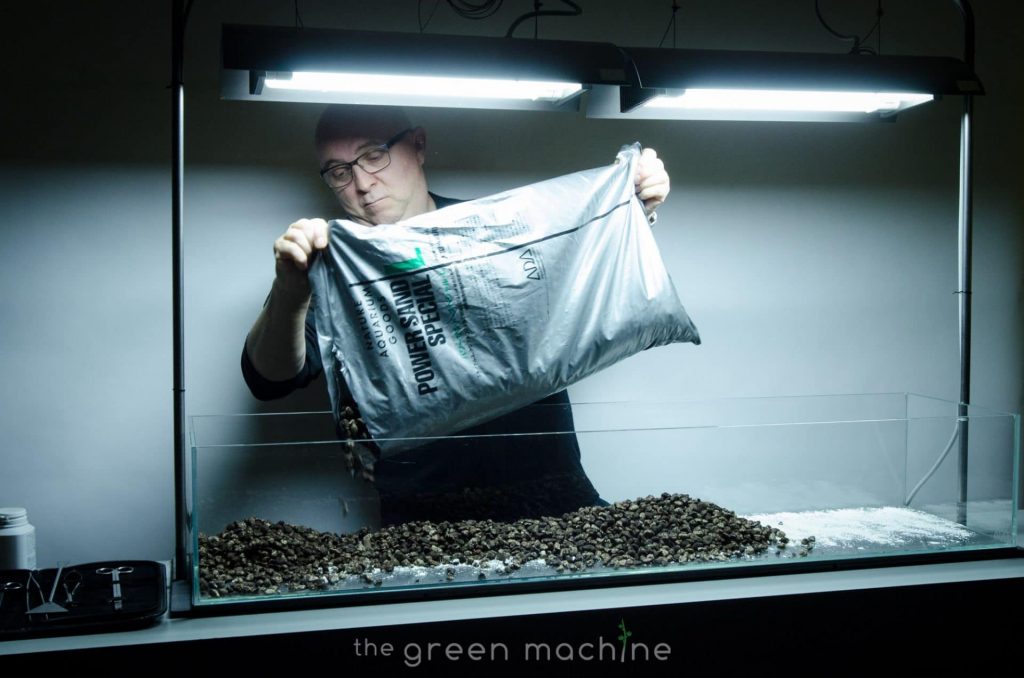
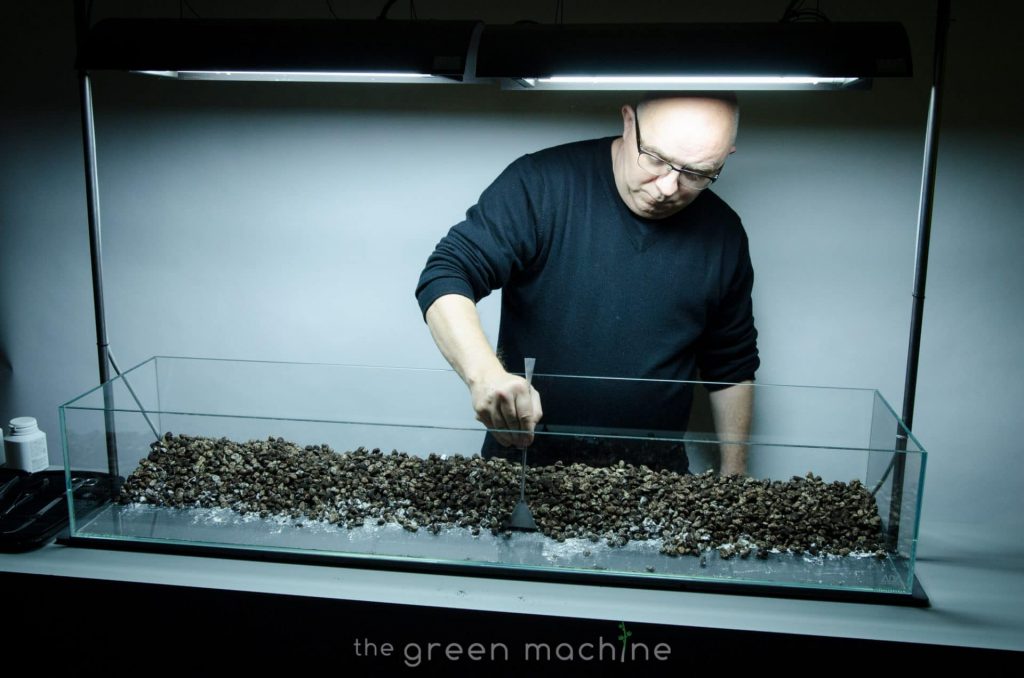
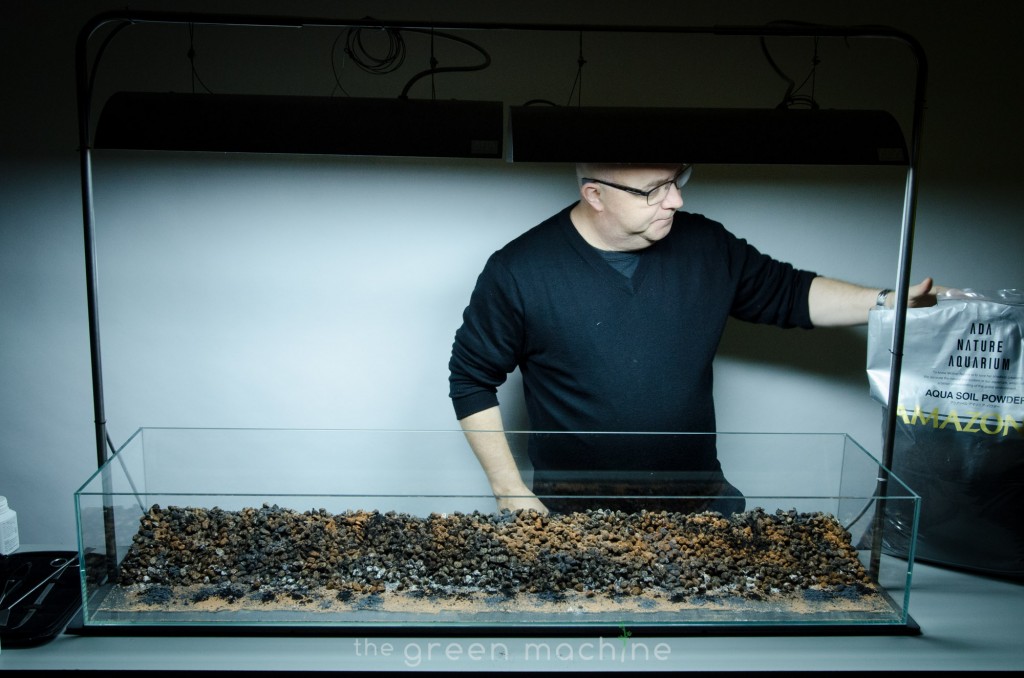
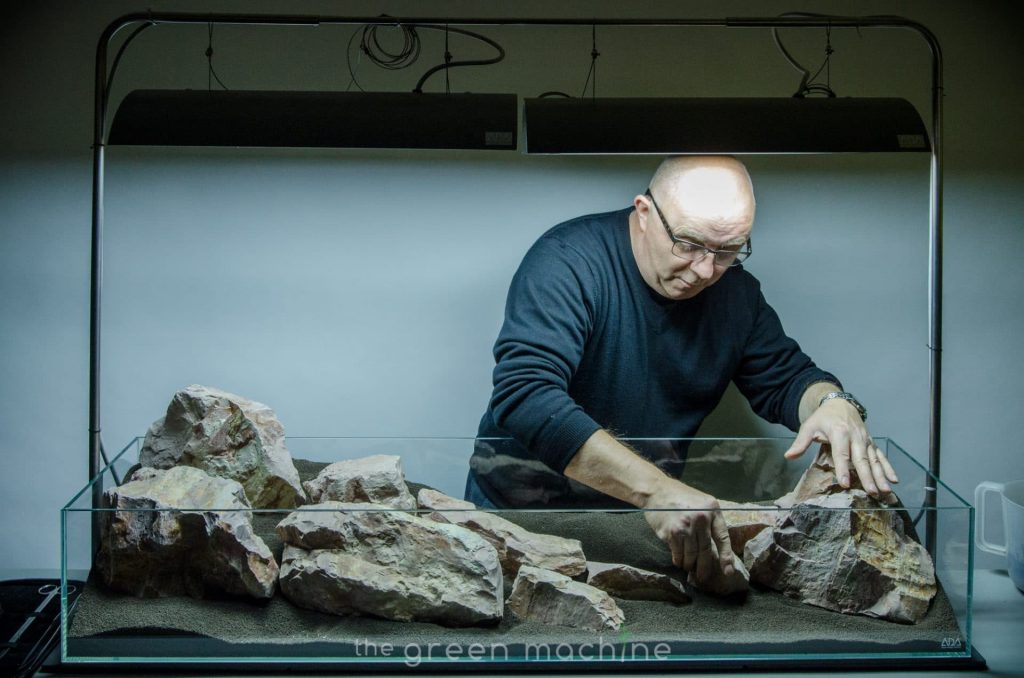
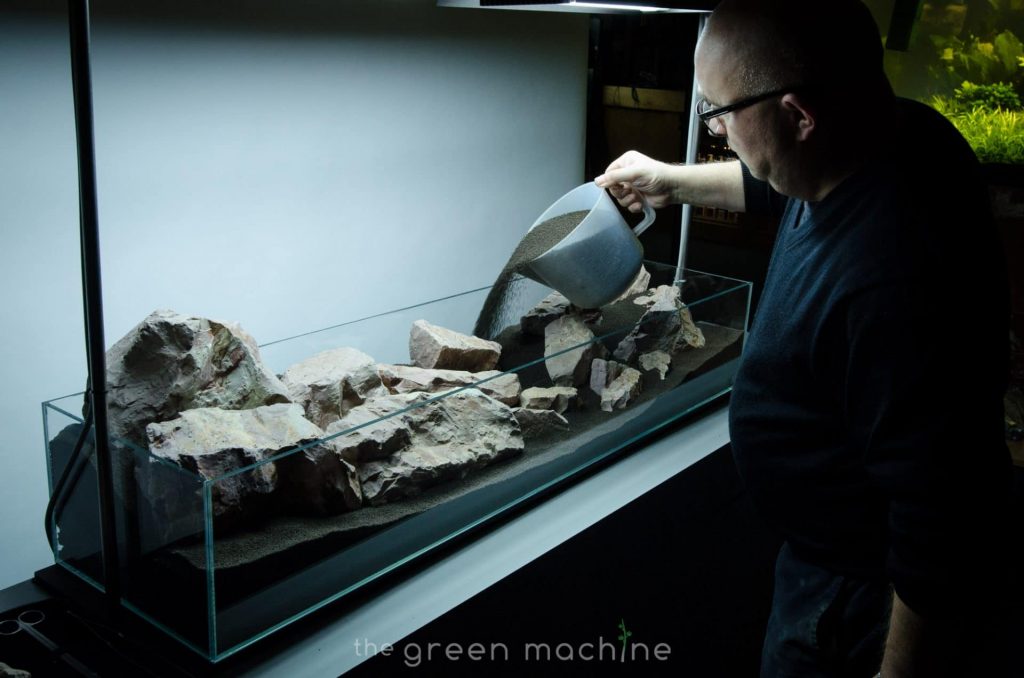
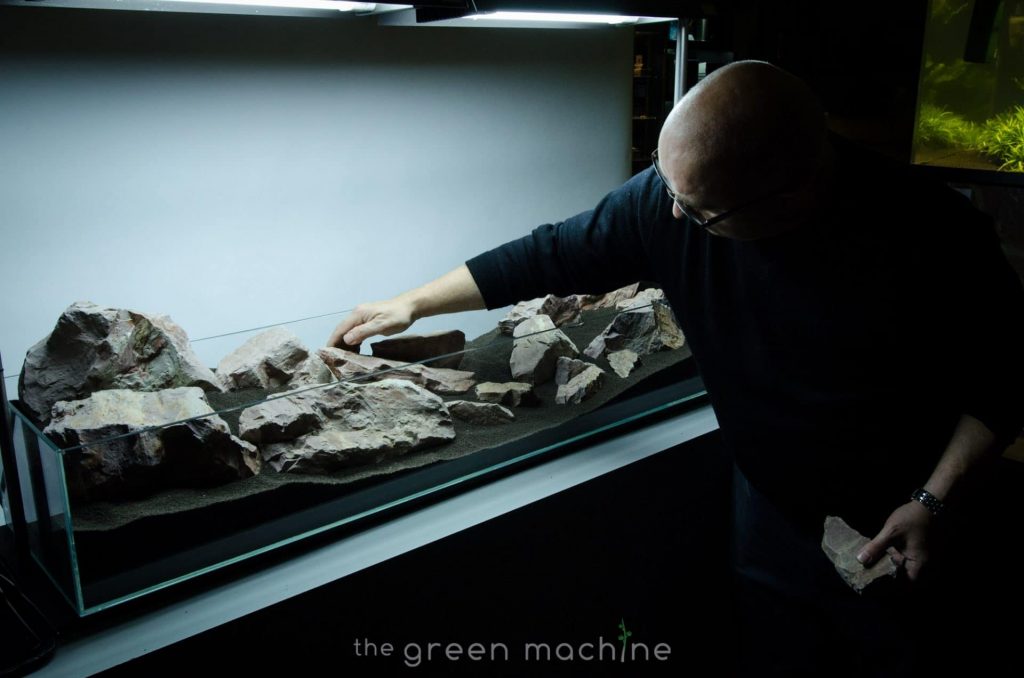
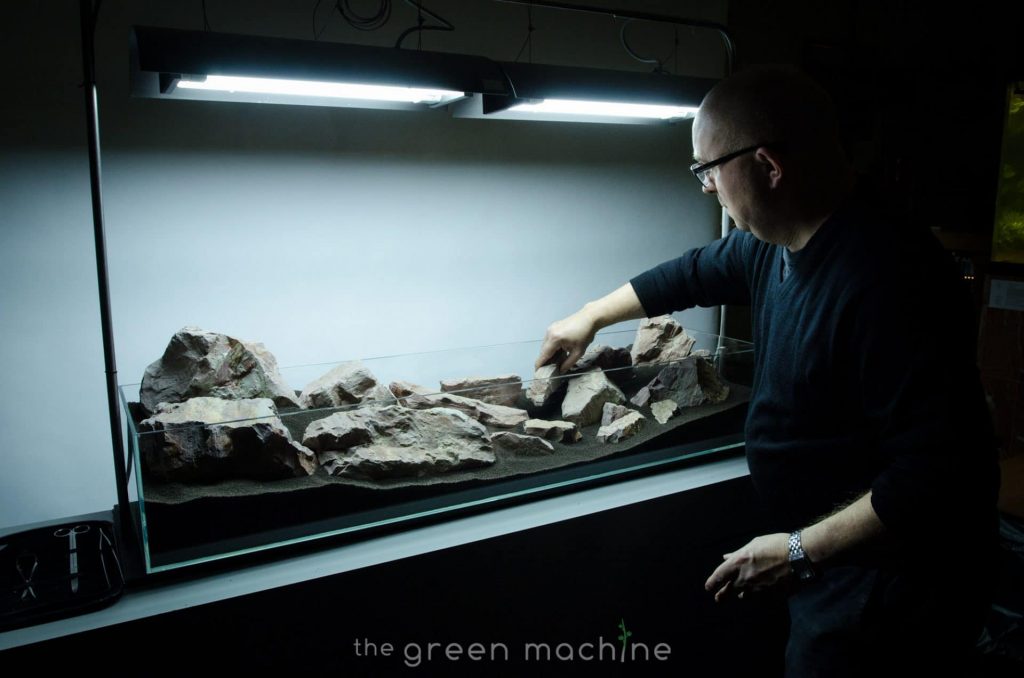
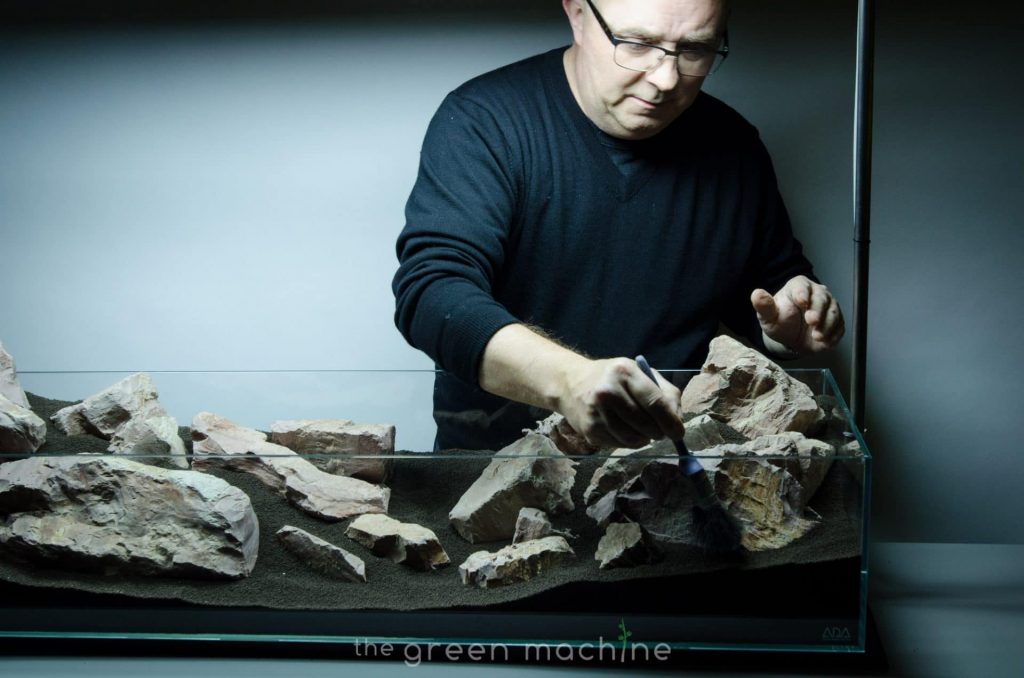
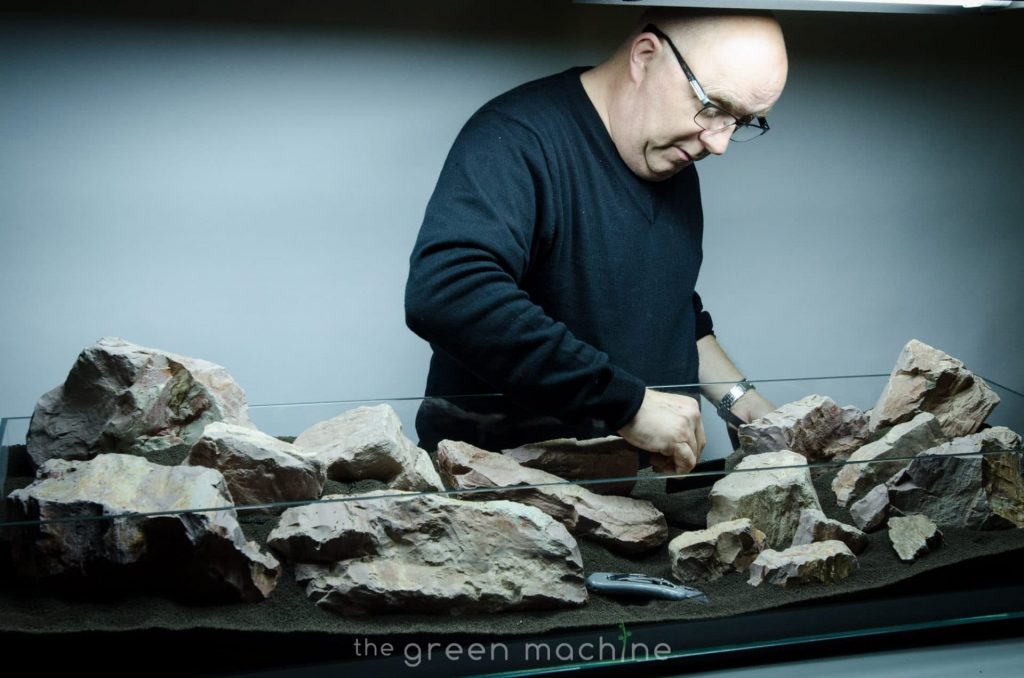
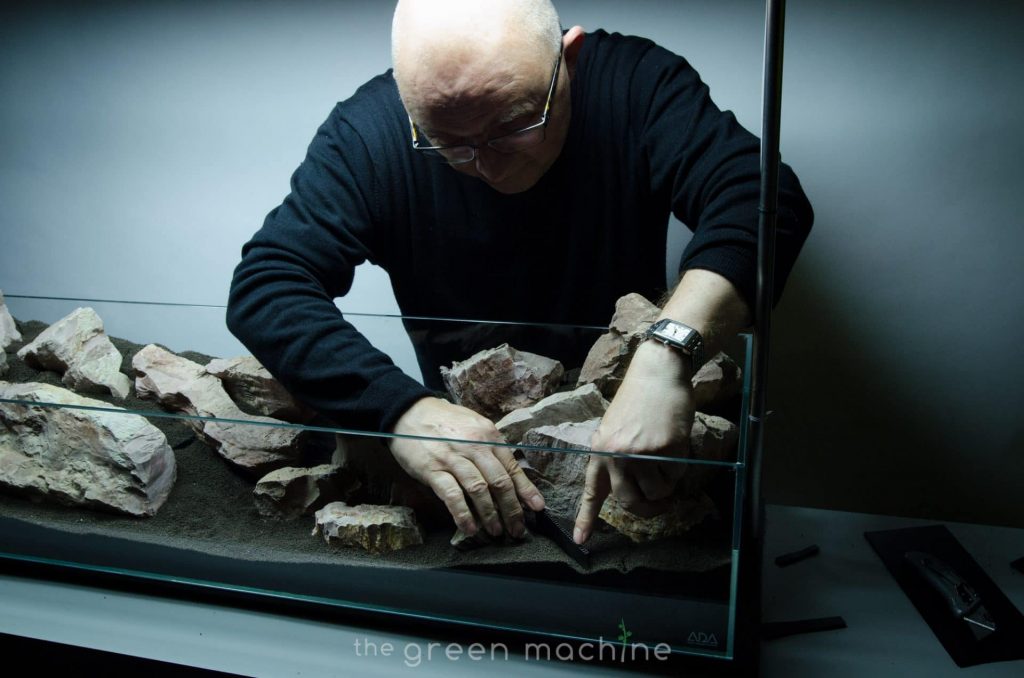
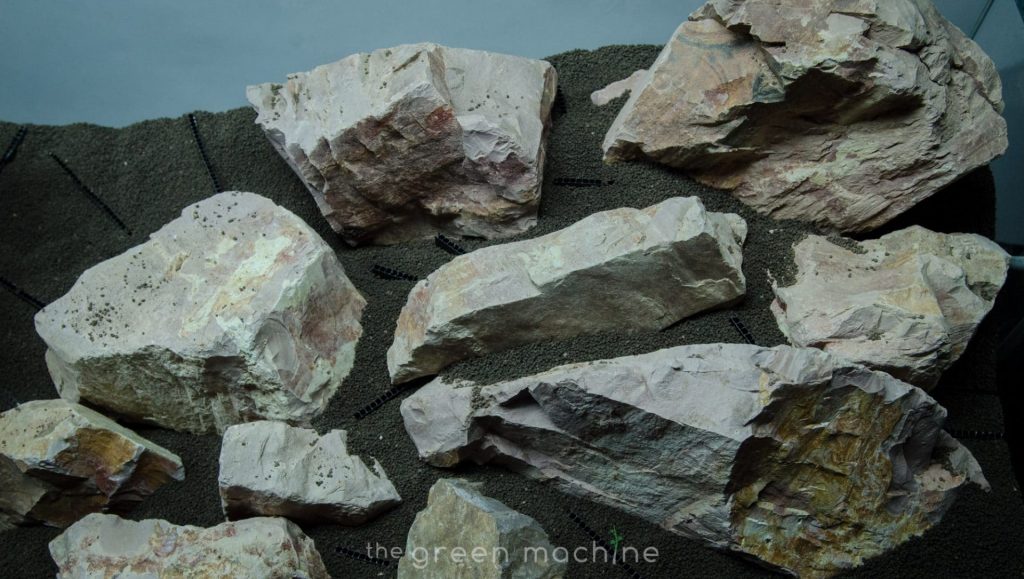
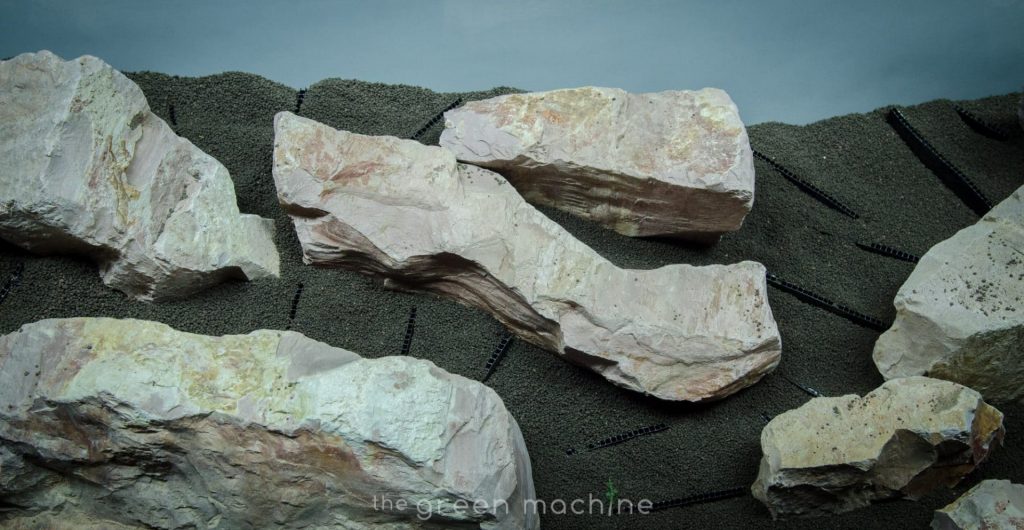
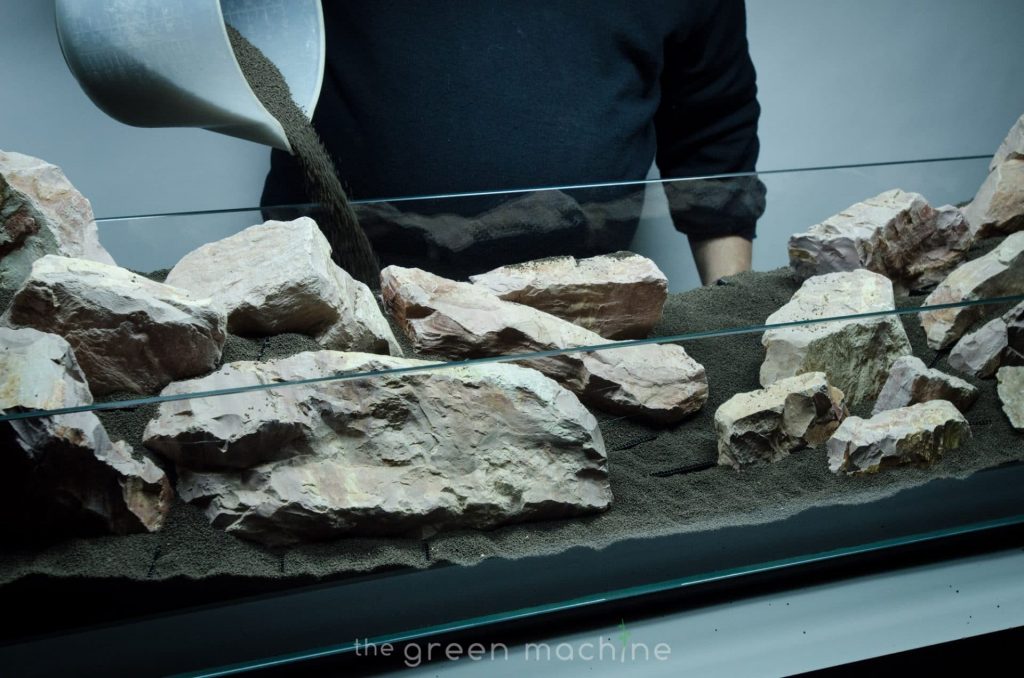
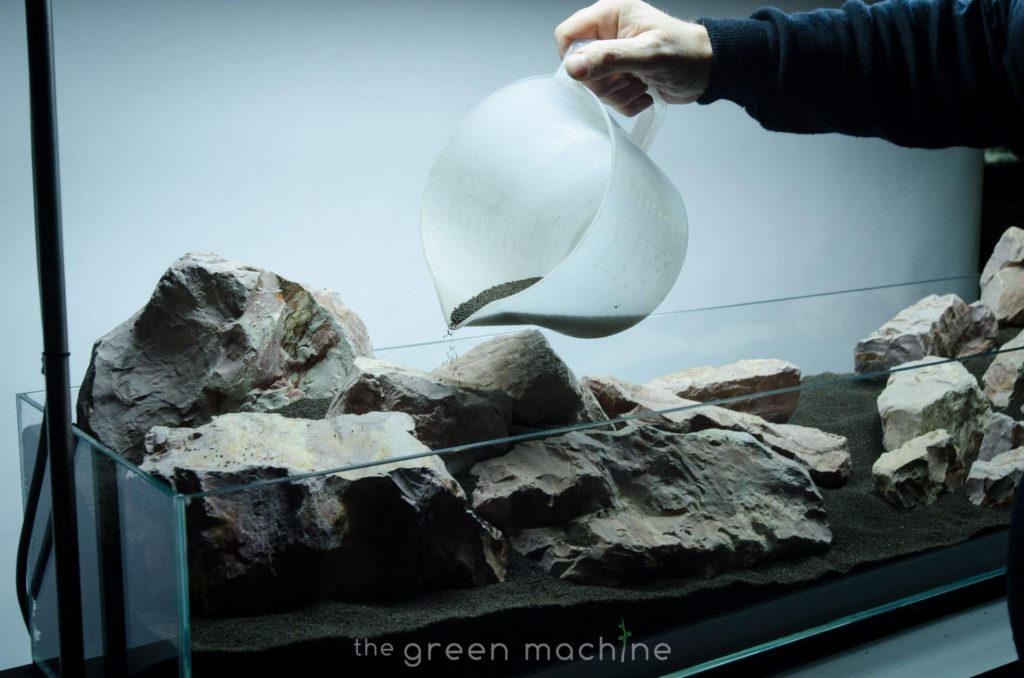
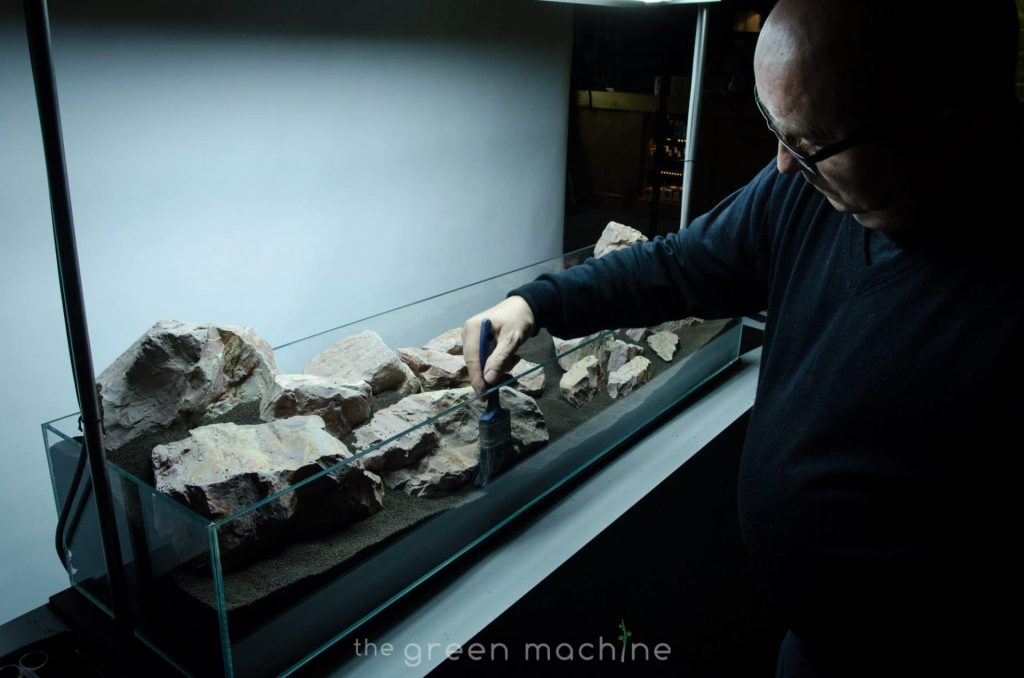

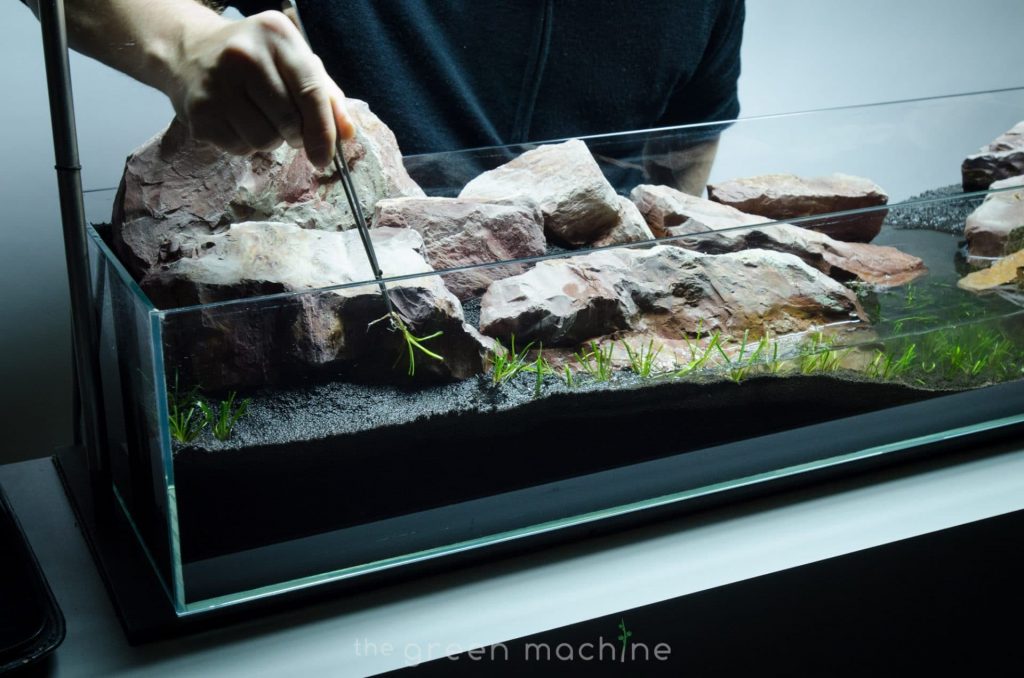
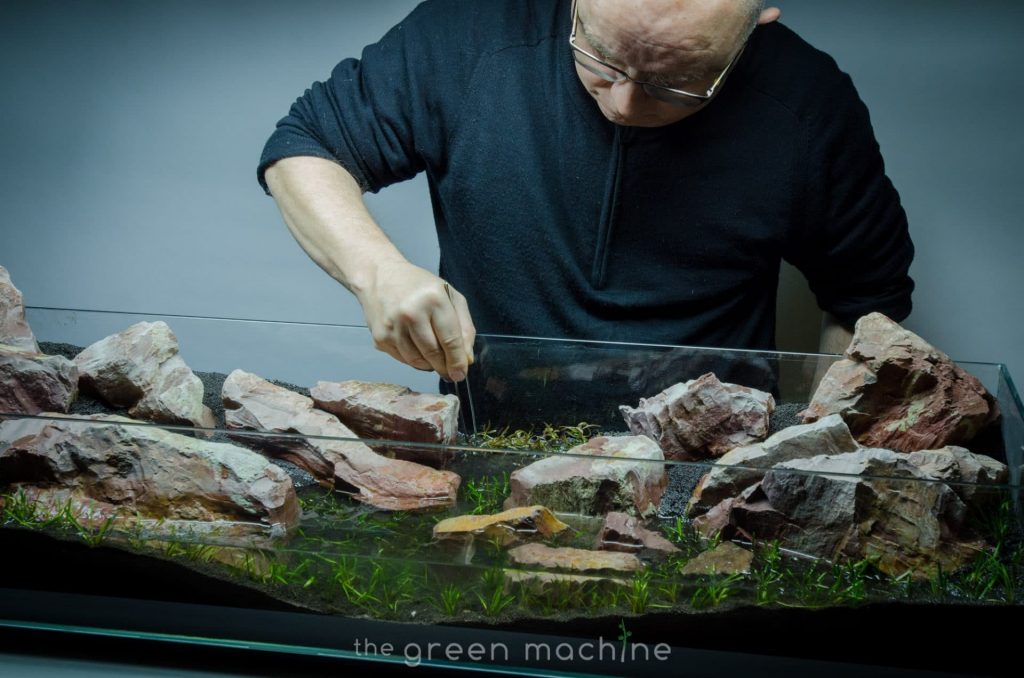
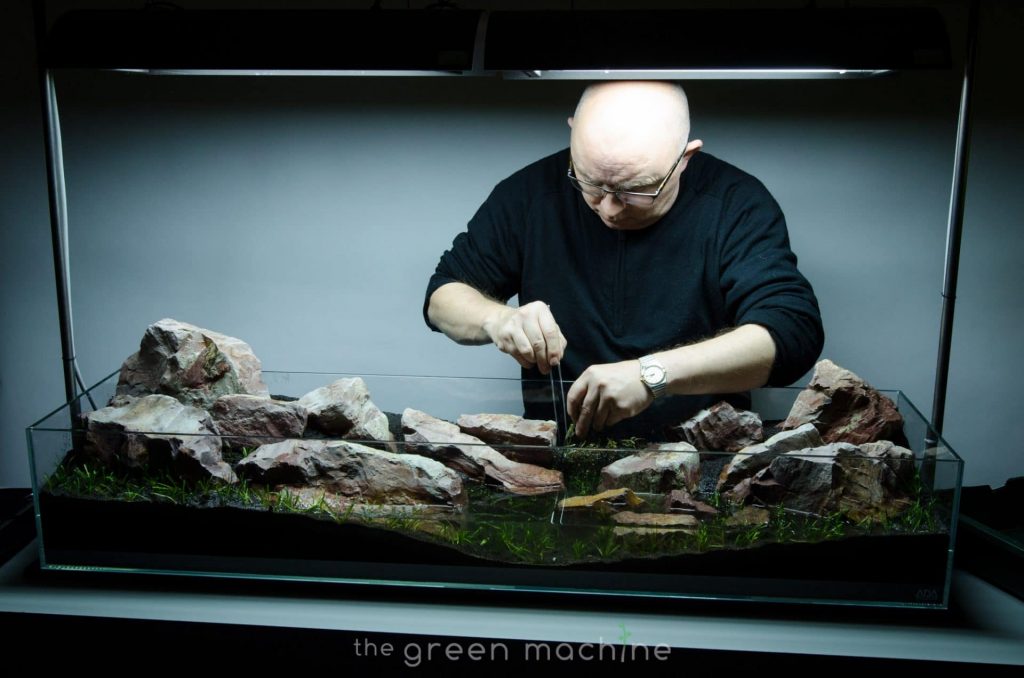
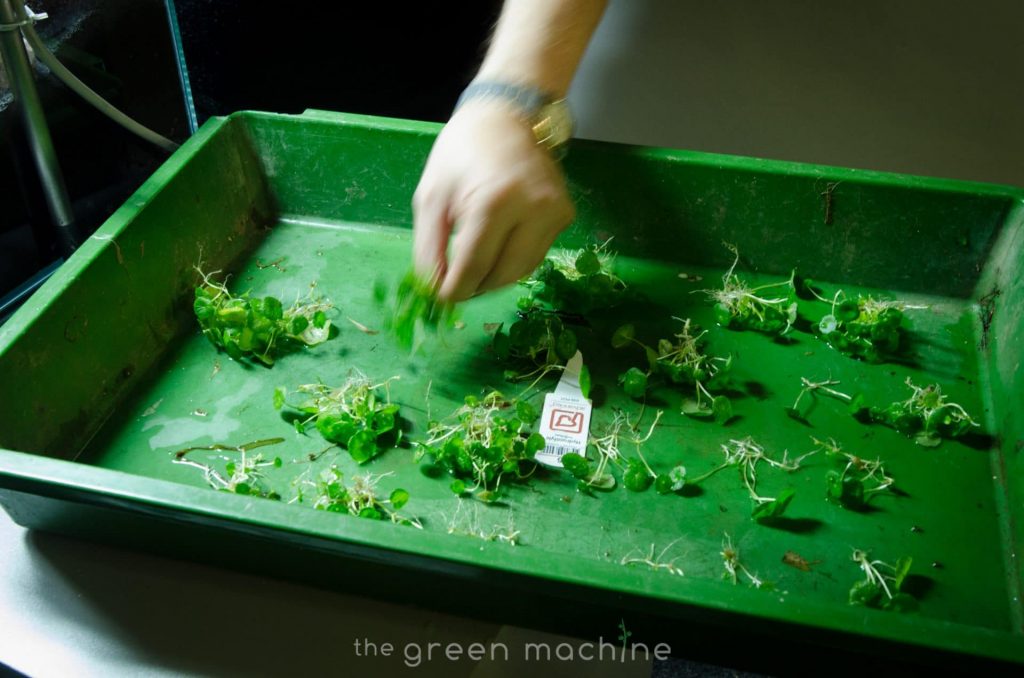
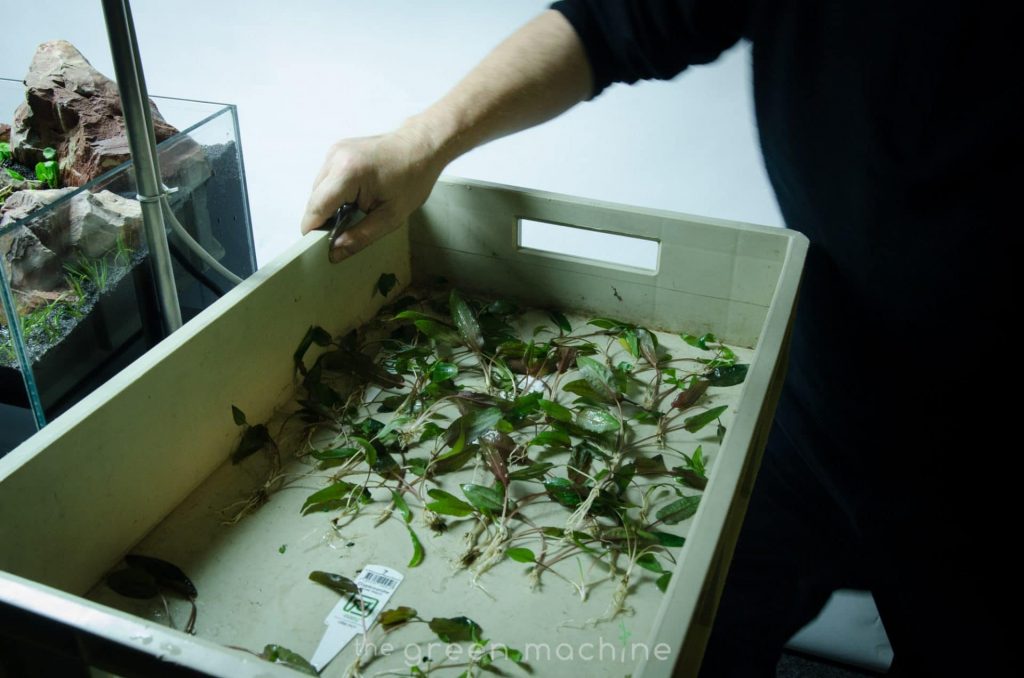
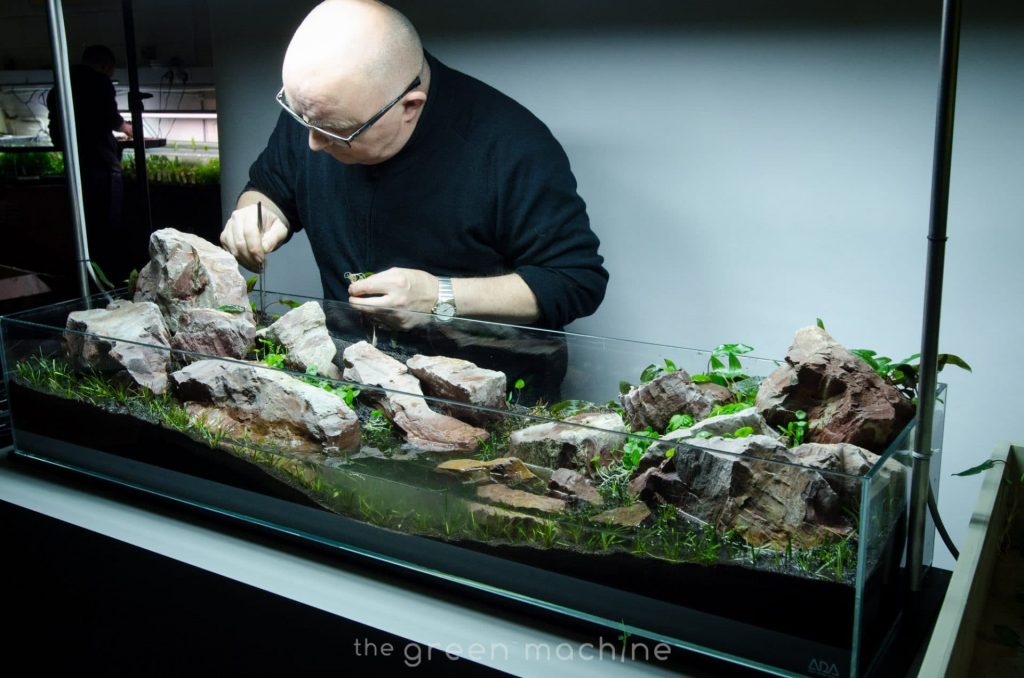
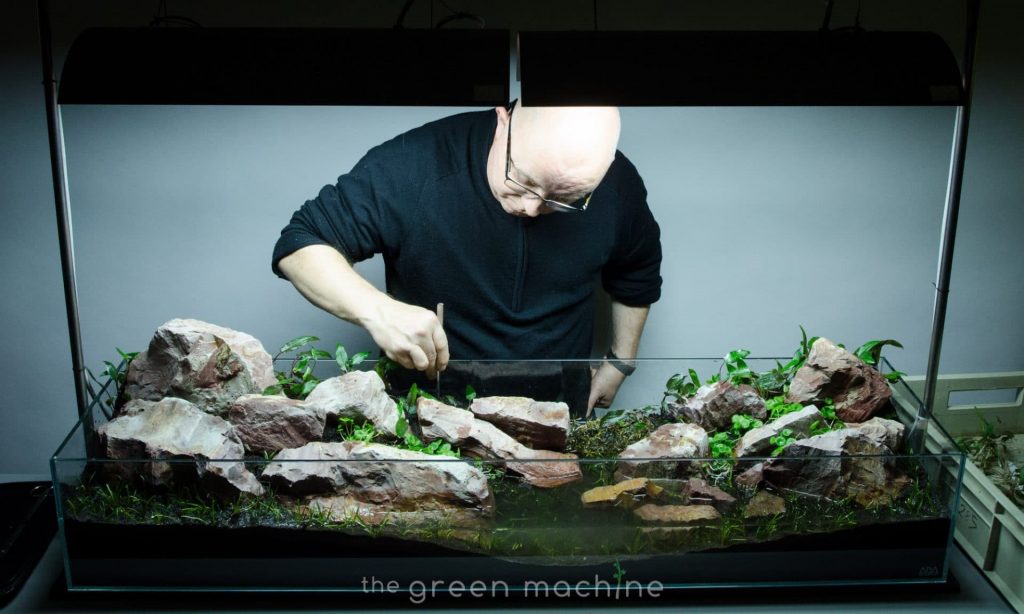
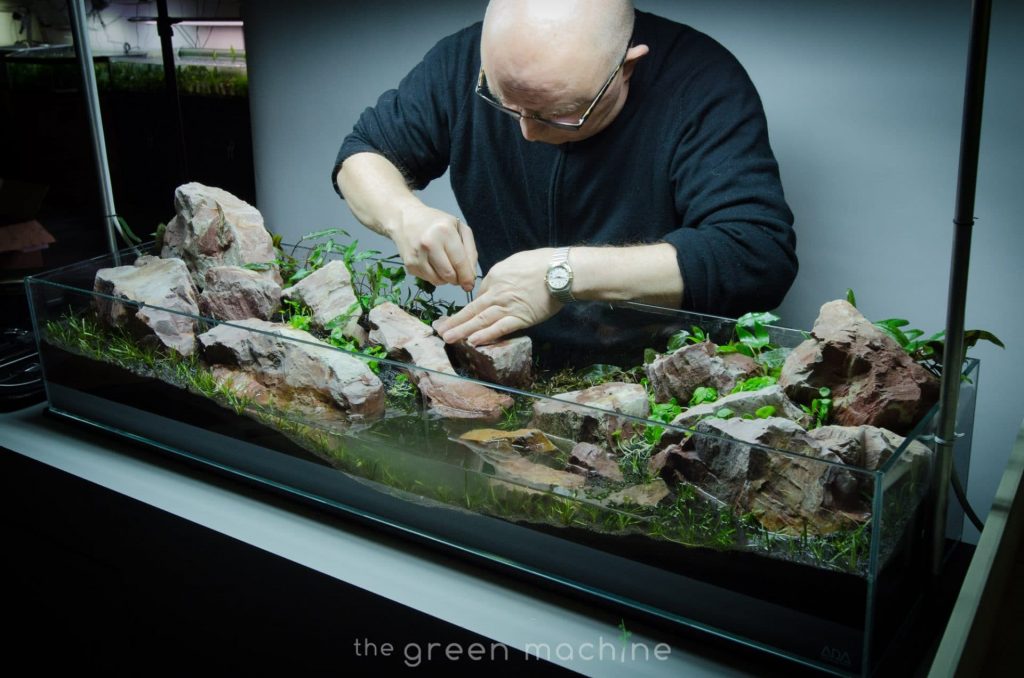
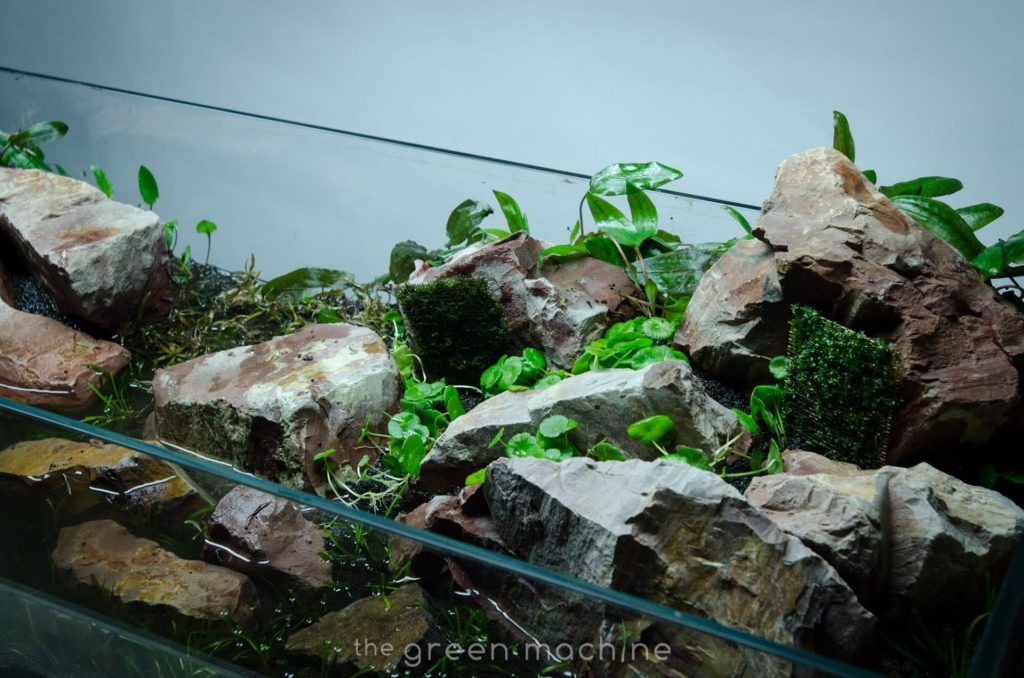
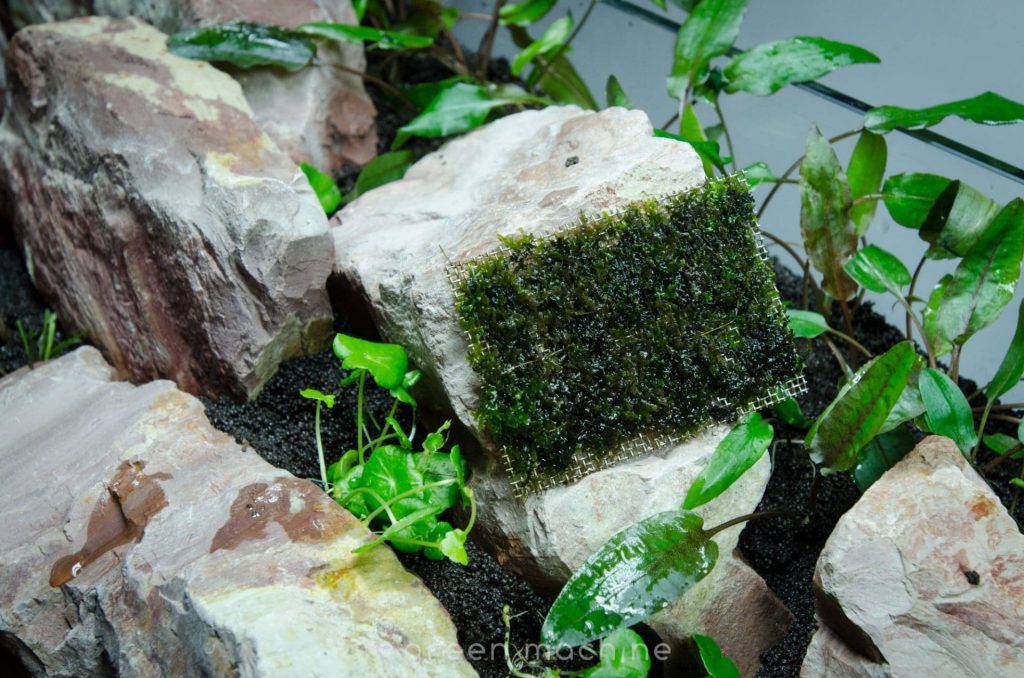
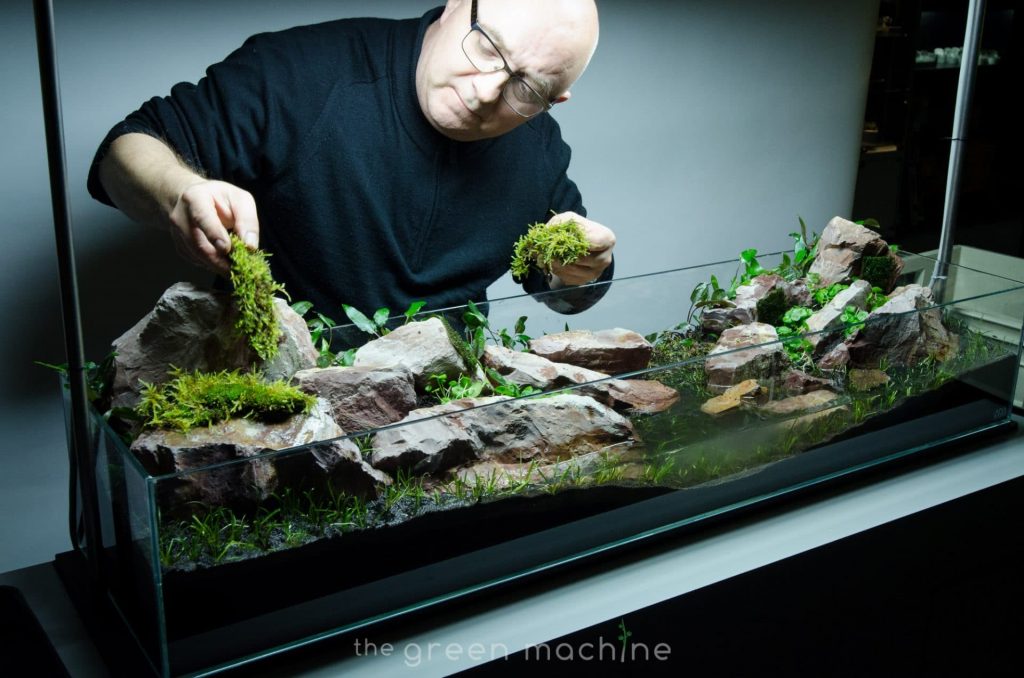
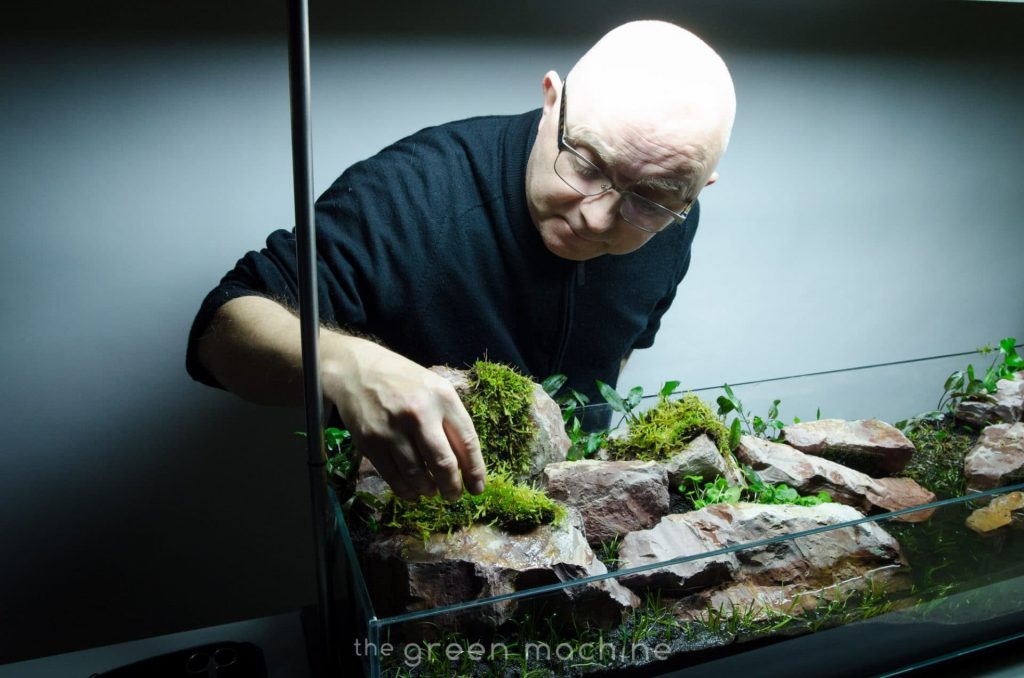


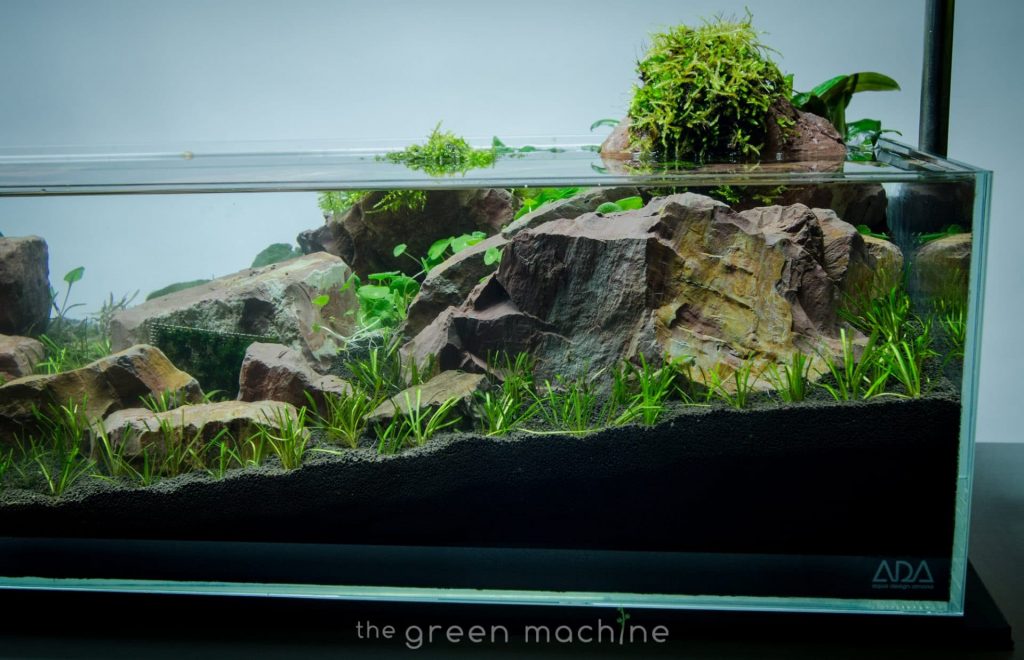
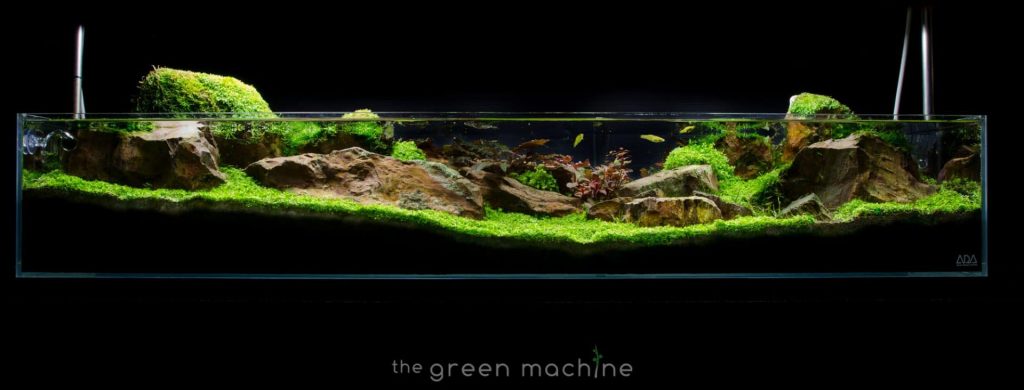

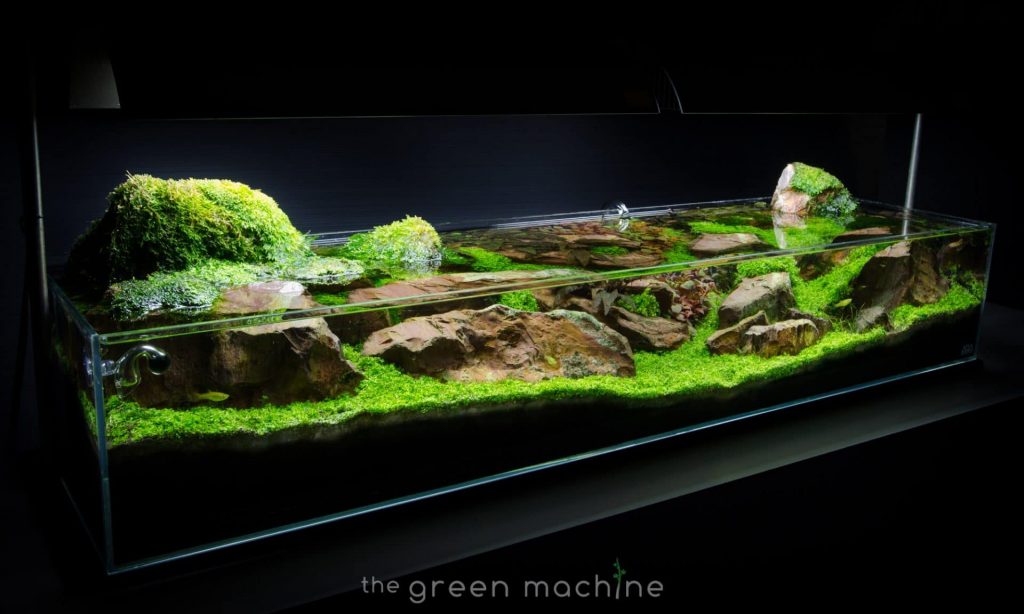
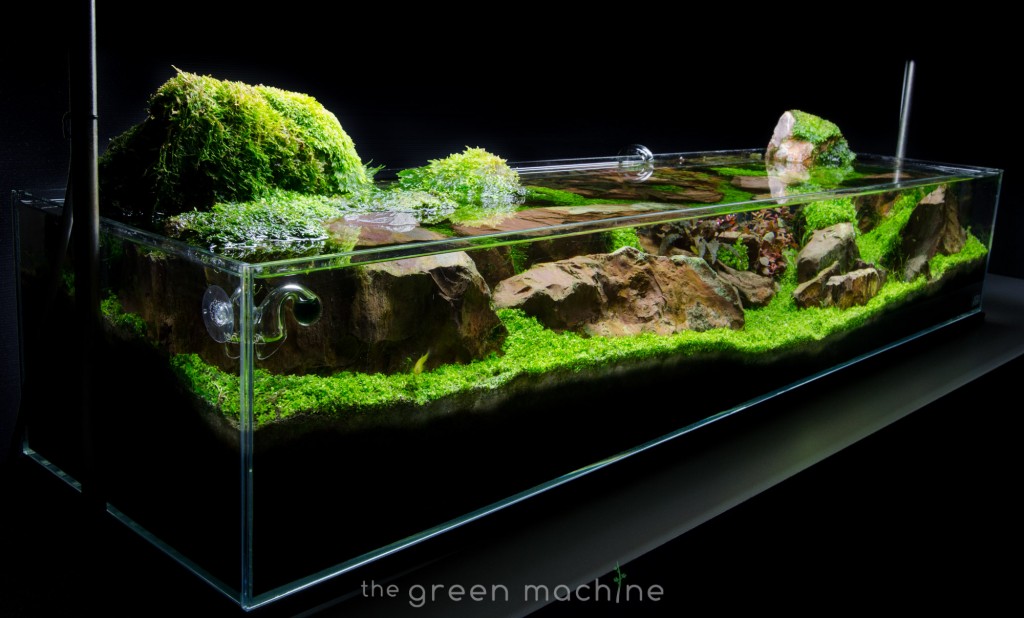
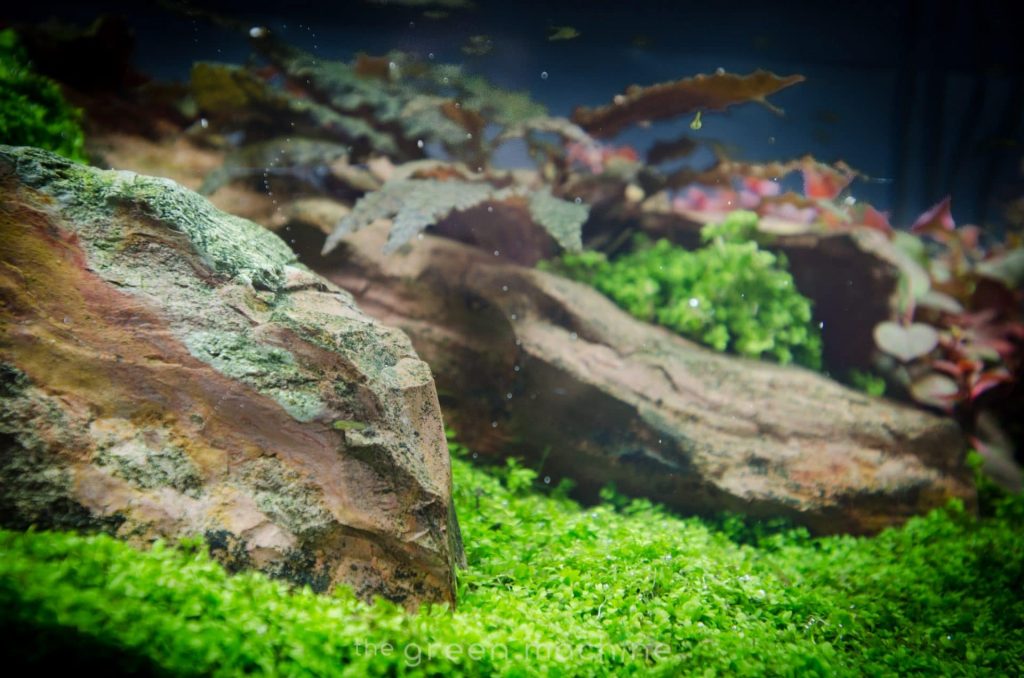
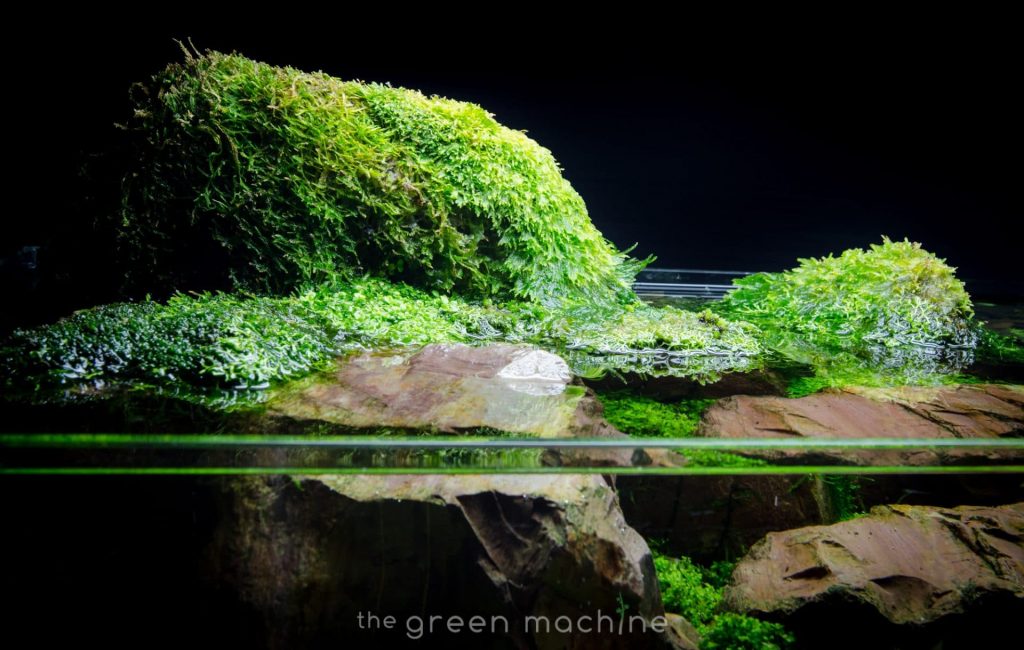
Hi This is amazing! how do we maintain and do you have to clean or change the water from time to time?
Thanks! Fabiana